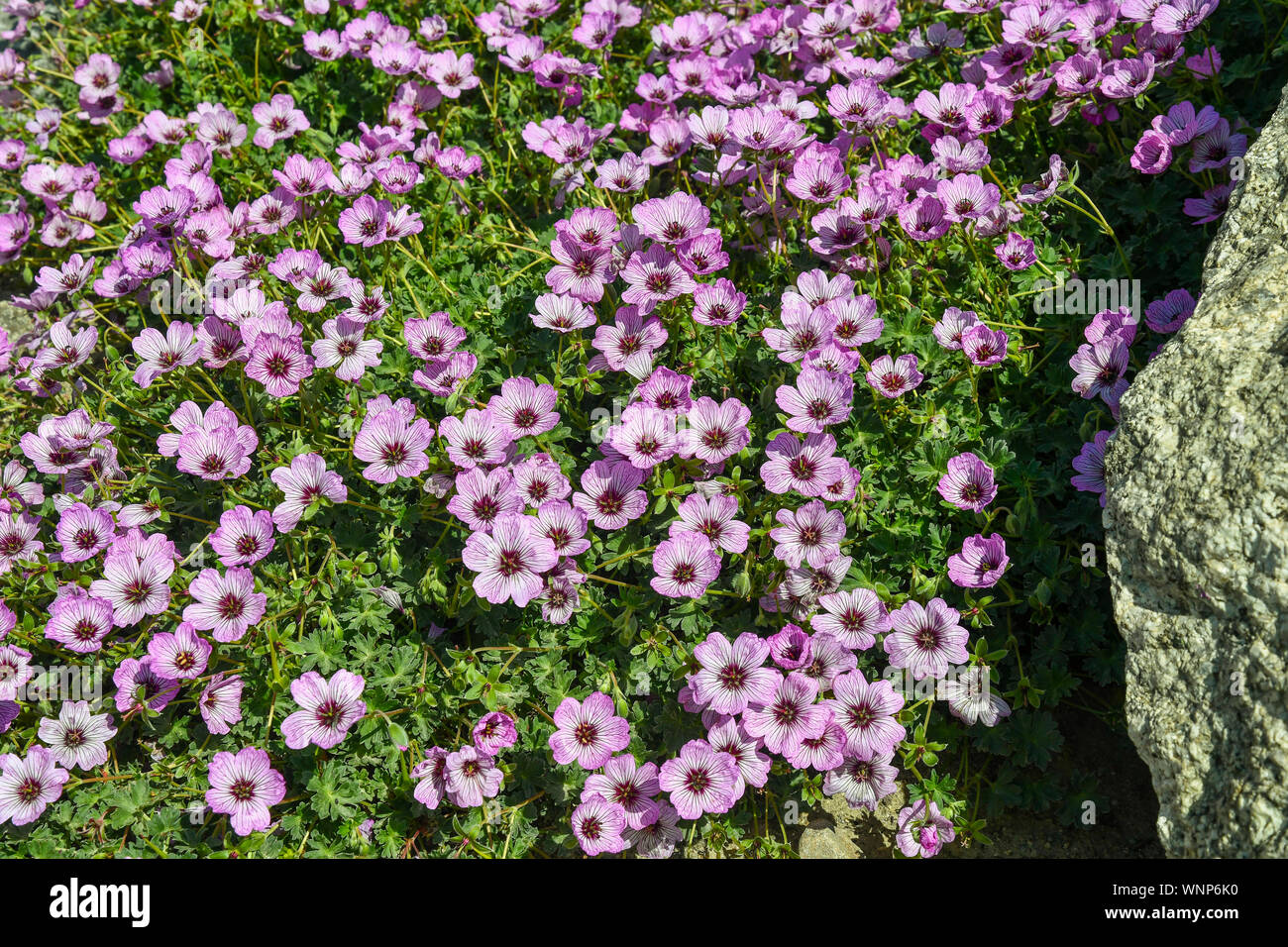Alpine stork’s bill, also known by its botanical name Erodium, is a delightful flowering plant that can enhance any outdoor space. With its feathery foliage and cheery blooms in shades of pink, purple, and white, this versatile plant offers visual appeal along with various benefits for gardeners. Read on to learn why alpine stork’s bill deserves a spot in your garden.
An Ornamental Beauty
The most obvious benefit of alpine stork’s bill is its sheer beauty. This herbaceous perennial produces charming flowers from spring to fall that resemble miniature versions of a geranium bloom. Each five-petaled flower bears contrasting veining and markings for a delicate and sophisticated look. The fern-like leaves are also attractive, providing greenery that pairs nicely with the flowers. Alpine stork’s bill brings elegance and refinement to flower beds, borders, rock gardens, and containers.
Flower Power
A major advantage of alpine stork’s bill is its long bloom season. You can enjoy the cheery flowers for months on end, from early spring into fall. Deadheading spent blooms encourages more blossoms, resulting in waves of color in your garden for an extended period. Unlike short-lived annuals, this perennial offers season-long enjoyment with minimal effort required.
Low-Maintenance Charm
While beautiful, alpine stork’s bill is also an unfussy, low-maintenance plant. It thrives in a variety of conditions, tolerating drought, high temperatures, and poor soils Alpine stork’s bill requires little watering, fertilizing, or pruning once established This tough, adaptable plant is an ideal option if you’re seeking a no-fuss, resilient addition to your landscape. Its self-sufficient nature makes it perfect for beginner gardeners.
Natural Insect Repellent
Alpine stork’s bill has a secret weapon—its foliage naturally deters common garden pests! The leaves give off a scent that repels insects, creating a sort of protective barrier around the plant. Interplanting alpine stork’s bill with flowers, vegetables, and herbs can help deter aphids, mites, and other harmful bugs looking for a snack. Let this humble plant guard your garden with its built-in pest control powers.
Wildlife-Friendly
Pollinators flock to alpine stork’s bill’s nectar-rich blooms Bees, butterflies, and hummingbirds will visit the flowers to feed on the sweet nectar By providing an attractive food source, this plant helps sustain pollinator populations in your area. Alpine stork’s bill promotes biodiversity, creating an ecosystem-friendly garden.
Versatile Planting
Alpine stork’s bill adapts well to various garden situations. Its compact, mounding form works nicely along borders and pathways The plant’s low spreading habit also makes it ideal for rock gardens, cascading over the edges of stone walls Alpine stork’s bill can be grown in flower beds, mixed containers, and hanging baskets too. Whether you have a large yard or a patio, there’s a spot for this adaptable plant.
Easy Propagation
Expanding your alpine stork’s bill collection is simple. The plant can be readily propagated from seeds or cuttings. And because it self-sows freely, new seedlings often pop up on their own! Sharing cuttings with other gardeners is an easy way to spread the beauty. In no time, you can have abundant plants for arranging in vignettes throughout your garden.
Herbal Uses
Historically, alpine stork’s bill leaves and roots were used medicinally to soothe digestive ailments. Though not a culinary herb, the leaves and flowers can be tossed into salads for a slightly sharp, parsley-like punch of flavor. For the adventurous gardener, this plant offers versatility beyond just ornamental appeal.
Hardy and Resilient
Because it’s so tough, alpine stork’s bill requires barely any special care to overwinter. A bit of added mulch provides insulation for the roots when temps dip below freezing. The plant readily self-sows, offering an endless supply of robust seedlings each spring. Even if your plants suffer winter dieback, they’ll bounce right back the following season.
An Eco-Friendly Choice
As a drought-tolerant, low-maintenance perennial, alpine stork’s bill is a sustainable and earth-friendly choice. Minimal watering and fertilizing are needed, allowing you to garden with care for the environment in mind. Alpine stork’s bill sets down deep roots, preventing soil erosion while attracting helpful pollinators.
In Conclusion…
With its delicate floral displays, attractive fern-like foliage, and numerous benefits, alpine stork’s bill flower deserves a spot in any garden. This versatile plant offers ornamental appeal, pollinator-friendly blooms, natural pest control, and easy care and propagation. Alpine stork’s bill is the total package, providing beauty along with utility. Let this lovely, low-maintenance plant enhance your outdoor space with its charm and usefulness in the garden.

Unlimited Website Access (annual)
Unlimited access to the Taos News website for a full year! Plan includes access to our e-edition print replica online. Your auto pay plan will be conveniently renewed at the end of the subscription period. You may cancel at anytime. $55.00 for 365 days
Mail Delivery: New Mexico, Outside of Taos County (13 wks)
The Taos News mailed to your New Mexico state residence every week for 13 weeks! For readers who live in New Mexico but outside of Taos County. Plan includes unlimited website access and e-edition print replica online. Your auto pay plan will be conveniently renewed at the end of the subscription period. You may cancel at anytime. $58.46 for 91 days
Top 6 Alpine Plants For The Rock Garden // Garden Answer
FAQ
What are the benefits of storksbill plants?
How to use storksbill?
Is storksbill invasive?
